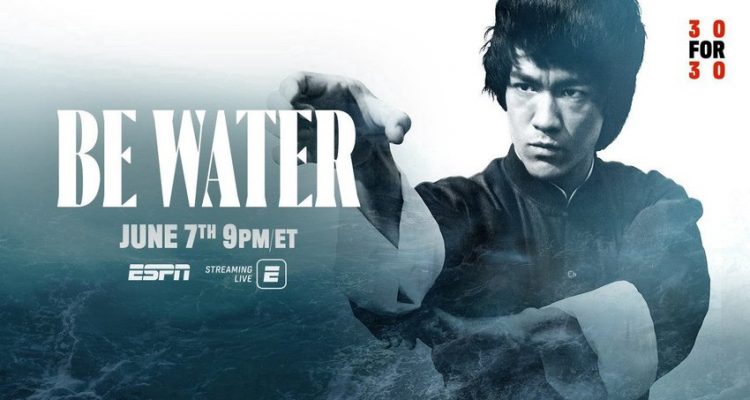Bruce Lee is one of those stars that is so otherworldly, he doesn’t seem real. His abilities as a martial artist are legendary and now we know his origin story is what inspired it.
On Sunday, ESPN premiered “Be Water” a documentary on Lee that is part of its 30 For 30 series.
During the COVID-19 pandemic, there has been a sharp rise in anti-Asian sentiment. Coupled with the current protest movement the country and the world is going through racial reckoning.
The documentary humanizes the myth of Bruce Lee. From being born in San Francisco to becoming a young Hong Kong film star. Filmmaker Bao Nguyen knew the legacy of Bruce Lee had yet to be really told.
“Bruce Lee was this anomaly — he was fighting back against decades of what people thought an Asian American male should be,” said Nguyen to the LA Times.
“He had to fight in all these different places about who he was and what he was supposed to be. He said, no: I’m going to tell you who I am.”
An Amazing Origin Story
Lee rose to fame during the 1970s as the star of Hong Kong action films. Classics like “Fist of Fury,” “The Way of the Dragon” and “The Big Boss,” grew his brand and sparked the popularity of martial arts in America.
When “Enter the Dragon” was released, a month after his death in 1973, at age 32, he became a legend.
The documentary weaves together archival photographs, home videos, interviews and Lee’s own written words. In normal 30 For 30 format, through nostalgia a poetic profile is crafted of Lee’s unique history.
Bruce’s daughter, Shannon Lee and her mother Linda Lee Cadwell provide the bedrock of the narrative. Friends like Kareem Abdul-Jabbar and more paint a portrait of the Bruce Lee they knew.
Lee knew who he was and didn’t want to compromise. After landing a chance role as Kato in The Green Hornet, Lee began a career in Hollywood. He eventually would go on to star in classic movies like “Enter The Dragon” and “Game of Death” and more. He became has become an everlasting symbol for Asian pride and strength.
Reading aloud from her father’s collected writings, Shannon Lee gives voice to his words as the film explores his most personal journey: being pro-Asian during a very unpopular time.
America’s Sins
Japanese internment happened in America and it began with forced evacuation from San Francisco on April 7, 1942. President Franklin Roosevelt signed Executive Order 9066, ordering Japanese Americans on the West Coast to be incarcerated in internment camps.
The Japanese community in San Francisco was treated like an enemy alien population. Any person of Japanese ancestry was required to sell their belongings, give up their homes and move into temporary relocation camps.
“He faced a lot of prejudices in his own life and I think he could just see at a core level, at a heart-centered level, how truly ridiculous those types of judgments were on people,” said Shannon Lee.
Her parents married during a time when interracial marriage was still taboo and definitely illegal in some parts of the country.
“My father embraced all communities and himself and I think that he represented in his own being and also in the films that he did this powerful, nonwhite figure who was able to take on all different injustices.”
